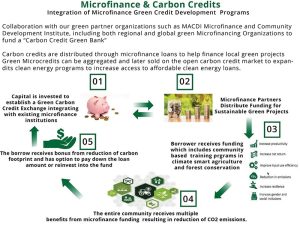How Do I Get Carbon Credits?
Get Carbon Credits
A carbon credit is a type of permit that represents one ton of greenhouse gas emissions reduced or removed from the atmosphere. These are created through a variety of means, including agricultural or forestry practices, methane capture projects and other processes that reduce, avoid or remove emissions from the air. They can then be purchased by individuals or companies to offset the carbon dioxide that is emitted from their own operations, such as industrial production, delivery vehicles or travel.
For example, a landowner that agrees to forgo aggressive timber harvesting on a track of forest in perpetuity will be able to earn money from the carbon credits it generates. The landowner can then sell the carbon credits to a cement manufacturer to help it meet a short-term regulatory requirement, and the cement manufacturer can use those carbon credits to offset its own emissions. Everyone wins: the landowner gets cold, hard cash; the cement manufacturer can meet its regulatory requirements; and the carbon credits have been verified to ensure that they actually do what they claim to do.

The voluntary market for carbon.credit, which is also sometimes referred to as the “cap and trade” market, has grown considerably in recent years. This is partly because governments have begun to set limits on how many tonnes of emissions certain sectors can release, and the companies that need to address their emissions can do so by buying carbon credits from those who can produce them.
How Do I Get Carbon Credits?
To buy a carbon credit, an individual or company will need to create an account with a particular carbon offset program’s registry. The registries contain detailed information on all the projects registered with that program, and each credit is assigned a unique serial number. Buyers can then purchase carbon credits through a variety of methods, from hands-on direct engagement in offset projects to simply purchasing them on an exchange.
Once purchased, the credits will be transferred from the project proponent’s account to the buyers’ accounts within an offset program’s registry. They will then remain in the buyers’ accounts until they are used to offset emissions, at which time they will be “retired.”
Verified carbon credits are unique, in that they have been subjected to thorough scrutiny and analysis to ensure they truly represent a reduction or removal of greenhouse gases from the atmosphere. This is a critical piece of the quality assurance process, and it allows buyers to be confident that the carbon they are purchasing has the actual environmental impact that they require. This helps to build trust in the carbon markets and encourages further investment. Getting involved in the verification process can give buyers the opportunity to gain deep project engagement and a better understanding of a project’s strengths and weaknesses. It can also allow them to access carbon credits at a lower cost than they would otherwise pay for through third parties.